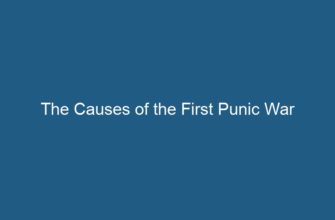The first Spanish settlement in North America was established in 1565 in what is now St. Augustine, Florida. This settlement, known as St. Augustine, was founded by Spanish explorer Pedro Menéndez de Avilés and served as the capital of Spanish Florida for more than 200 years.
The Background of Spanish Exploration in North America
Before the establishment of St. Augustine, Spanish explorers had been venturing into North America in search of wealth and opportunities for colonization. One of the earliest Spanish explorers to reach North America was Juan Ponce de León, who landed in Florida in 1513. His expedition did not result in the establishment of a permanent settlement, but it paved the way for future Spanish exploration and colonization in the region.
Throughout the 16th century, Spanish explorers such as Hernando de Soto and Álvar Núñez Cabeza de Vaca explored various parts of North America, including present-day Florida, Texas, and the Southwest. These explorations provided Spain with valuable information about the geography and resources of the continent.
The Establishment of St. Augustine
In 1565, Pedro Menéndez de Avilés was appointed by the Spanish crown as the Adelantado (governor) of Florida. His mission was to establish a permanent settlement to protect Spanish interests in the region and to counter the growing influence of other European powers, particularly the French, who had established a short-lived colony in Florida in the 1560s.
Menéndez de Avilés sailed from Spain with a fleet of ships and arrived on the east coast of Florida in August 1565. He chose a site on a peninsula between the Atlantic Ocean and the Matanzas River for the new settlement, which he named St. Augustine in honor of the saint whose feast day falls on August 28, the day of Menéndez’s arrival.
The settlement of St. Augustine was strategically located, allowing the Spanish to control access to the Gulf of Mexico and the Caribbean Sea. It also provided a base for further Spanish exploration and colonization in North America.
The Growth and Development of St. Augustine
St. Augustine grew slowly in its early years, facing numerous challenges such as attacks from Native American tribes, pirates, and rival European powers. However, the settlement gradually expanded and developed into a thriving colonial town.
One of the key factors contributing to the growth of St. Augustine was the establishment of a fort, known as Castillo de San Marcos, in 1672. The fort provided protection for the settlement and became a symbol of Spanish power in the region. Today, Castillo de San Marcos is a National Monument and is considered the oldest masonry fort in the continental United States.
In addition to the fort, St. Augustine also had a growing population of Spanish settlers, as well as a diverse community of free and enslaved Africans, Native Americans, and people of various European backgrounds. The settlement became an important center for trade, agriculture, and religious missions.
Conflicts and Transitions
Over the centuries, St. Augustine witnessed various conflicts and transitions. In the late 17th century, the settlement faced attacks from the English, who sought to expand their influence in North America. St. Augustine was briefly occupied by the English in 1702 but was later reclaimed by the Spanish.
In the 18th century, St. Augustine became a hub for Spanish colonial administration in Florida. The settlement served as the capital of Spanish East Florida, which encompassed the entire peninsula. During this time, St. Augustine experienced economic growth and cultural exchange.
However, the Spanish control over Florida came to an end in 1821 when the territory was transferred to the United States following the Adams-Onís Treaty. St. Augustine became part of the United States and continued to evolve under American rule.
St. Augustine Today
Today, St. Augustine is a popular tourist destination and a testament to its rich history as the first Spanish settlement in North America. The city’s historic district, with its cobblestone streets, colonial architecture, and numerous landmarks, attracts visitors from around the world.
St. Augustine is also home to several museums, including the St. Augustine Pirate & Treasure Museum, the Lightner Museum, and the St. Augustine History Museum, which offer insights into the city’s past.
Frequently Asked Questions (FAQs)
-
When was St. Augustine founded?
St. Augustine was founded in 1565.
-
Who founded St. Augustine?
St. Augustine was founded by Spanish explorer Pedro Menéndez de Avilés.
-
Why was St. Augustine established?
St. Augustine was established to protect Spanish interests in Florida and counter the influence of other European powers.
-
What is the significance of Castillo de San Marcos?
Castillo de San Marcos is a fort that provided protection for St. Augustine and symbolized Spanish power in the region.
-
When did St. Augustine become part of the United States?
St. Augustine became part of the United States in 1821.
-
What can visitors see and do in St. Augustine today?
Visitors to St. Augustine can explore its historic district, visit museums, and enjoy its unique blend of Spanish and American culture.
In conclusion, the first Spanish settlement in North America was established in St. Augustine, Florida, in 1565. This historic settlement played a crucial role in Spanish exploration and colonization in the region, serving as the capital of Spanish Florida for over two centuries. Today, St. Augustine stands as a testament to its rich history and attracts visitors from around the world who come to experience its unique blend of Spanish and American culture.










